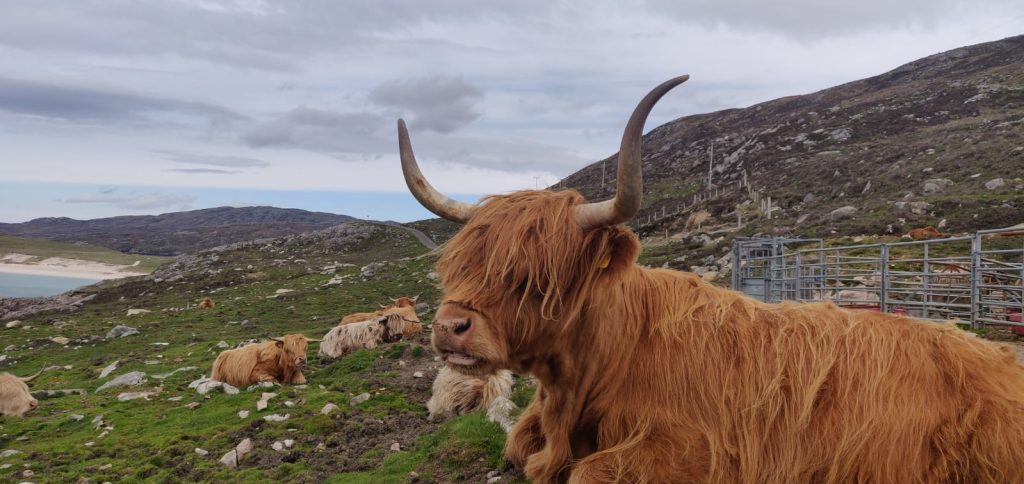Introduction to an Isle of Skye Road Trip
The Isle of Skye is the largest, and arguably most scenic, island in the Scottish Inner Hebrides. It is a region renowned for its wild Atlantic coastline, spire-like Cuillin mountains, medieval history, and charming fishing towns. One of the best ways to immerse yourself in this wonderland is to go on an Isle of Skye road trip.
You can visit Skye as a solo vacation or as part of a longer extension to the fabulous Scottish North Coast 500. In either case, we think hiring a motorhome allows you to peruse around the country and coastal lanes with absolute freedom. You can choose your route with ease and enjoy the independence of having a house on wheels! To get you on the road, here are some top tips for your Isle of Skye road trip.
Where is the Isle of Skye?
The Isle of Skye is situated off the northwest coast of Scotland. It is the second biggest island in the Hebrides – two sets of archipelagos that curl off the north Atlantic coast of Britain. These unique islands are some of the wildest in all the UK and Skye stands out as one of the Hebridean highlights. Skye is connected to the Scottish mainland by the Skye Bridge and the Calmac ferry service.

How to Get There?
An Isle of Skye road trip often begins on the mainland. Glasgow is the biggest Scottish city near Skye and all drivers from the south should make their way here before pushing on to Skye. Glasgow sits 216 miles from Portree, the unofficial capital of Skye. This route should take 5-6 hours to drive, although it’s well worth stopping in Fort William and the beautiful Glencoe to break up your journey.
For an alternative route, you can drive due west to Mallaig and hop on the ferry to Skye from there instead of taking the Skye Bridge. The ferry takes about 45 minutes and deposits you in Armadale, southern Skye. While here, you can take another small detour to Sleat to visit the southern tip of the isle.
Overall, Skye is a relatively small island. At only 50 miles long and 25 miles wide, you can drive around the coastline in a matter of days. However, to fully appreciate the area, aim for a 4-5 day itinerary. We would recommend at least a week if you include driving days and pit stops from further south.
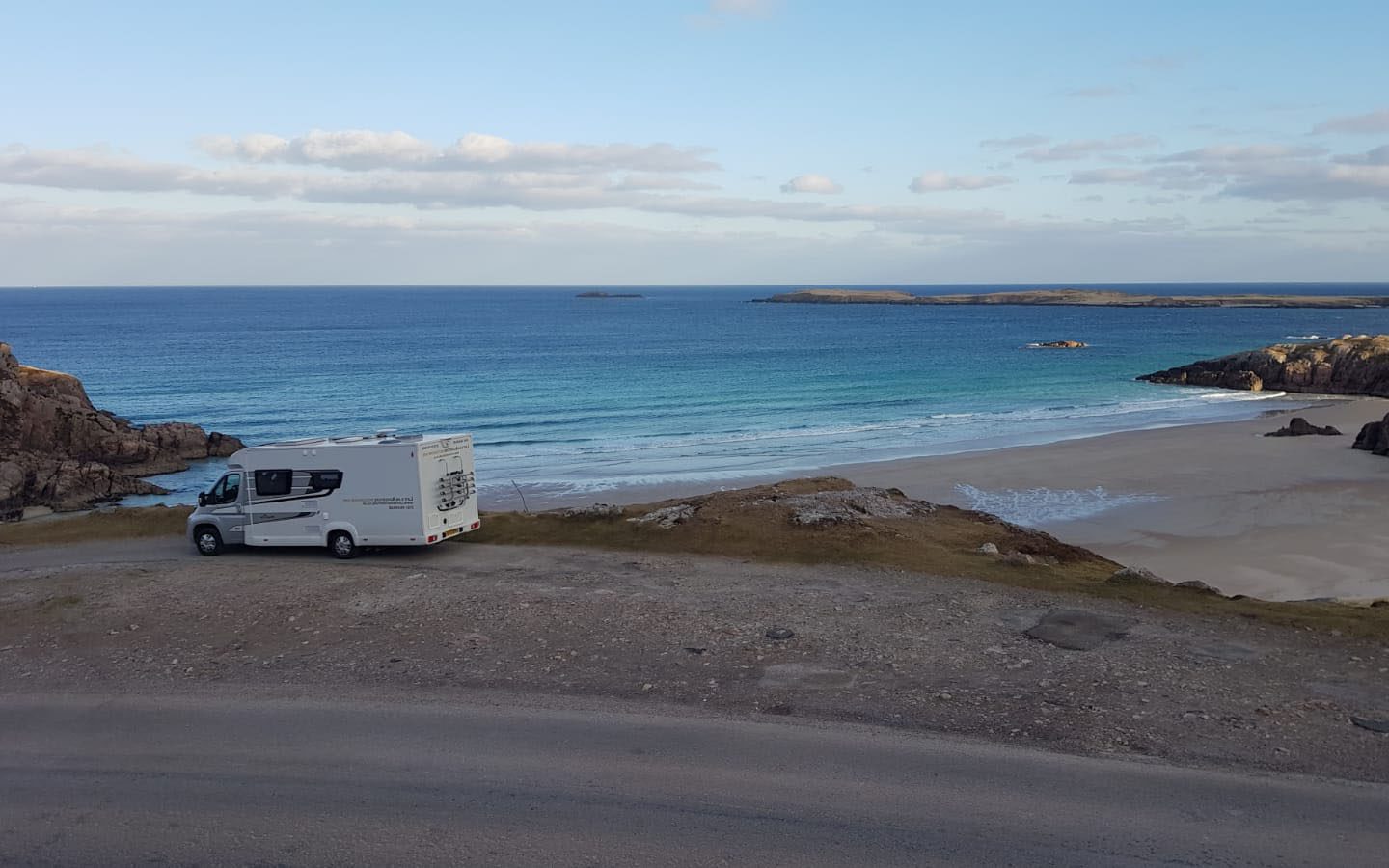
When to Visit?
The Isle of Skye is a multi-season destination. It is busiest in the summer when travellers flock to the coast to enjoy the warmer weather. This is also the season when you’ll have complete access to tourist sites. In the autumn, roads will be quieter, and the landscape will be dominated by a kaleidoscope of beautiful colours.
Spring can be a good time to visit for some sunshine and wildlife viewing, but you may get caught in cold snaps and rain showers. Winter is frigid and fierce, but that can offer a raw experience some travellers may find enticing. However, many campgrounds and some tourist sites close during the winter so bear that in mind when planning your Isle of Skye motorhome road trip.
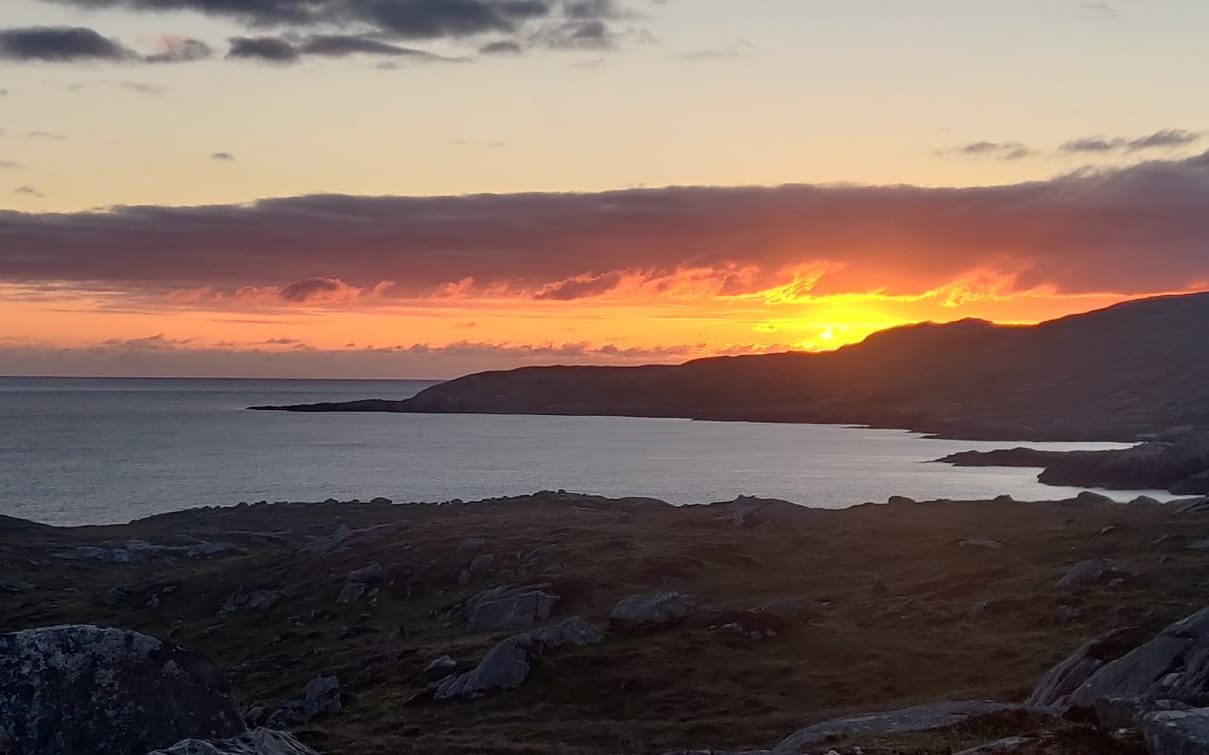
Where to Stay?
With remote bays for boondocking (motorhome camping in an undesignated location) and 7 established campsites, there are accommodation options to suit all travellers. After crossing the bridge on your Isle of Skye road trip, you can spend the night at Camping Skye in Broadford. Further north, the Skye Camping and Caravanning Club Site and Kinloch Campsite are both very popular.
Scotland benefits from the Freedom to Roam act which allows travellers to wild camp in nature spots. This law generally extends to van camping with plenty of beautiful roadside pitches on the island (there may be some exceptions to this so be sure to read any road signs before you set up camp for the night). Park4night is a useful website which shows you all the great boondocking areas available on Skye.
Alternatively, if you want a night’s break from campervan living, you can find plenty of cosy BnBs or quaint beach cottages to spend the night in the bigger towns of Portree, Dunvegan, and Broadford. You will also find some backpackers hostels and bunkhouses scattered across the island if you are travelling on a lighter budget.
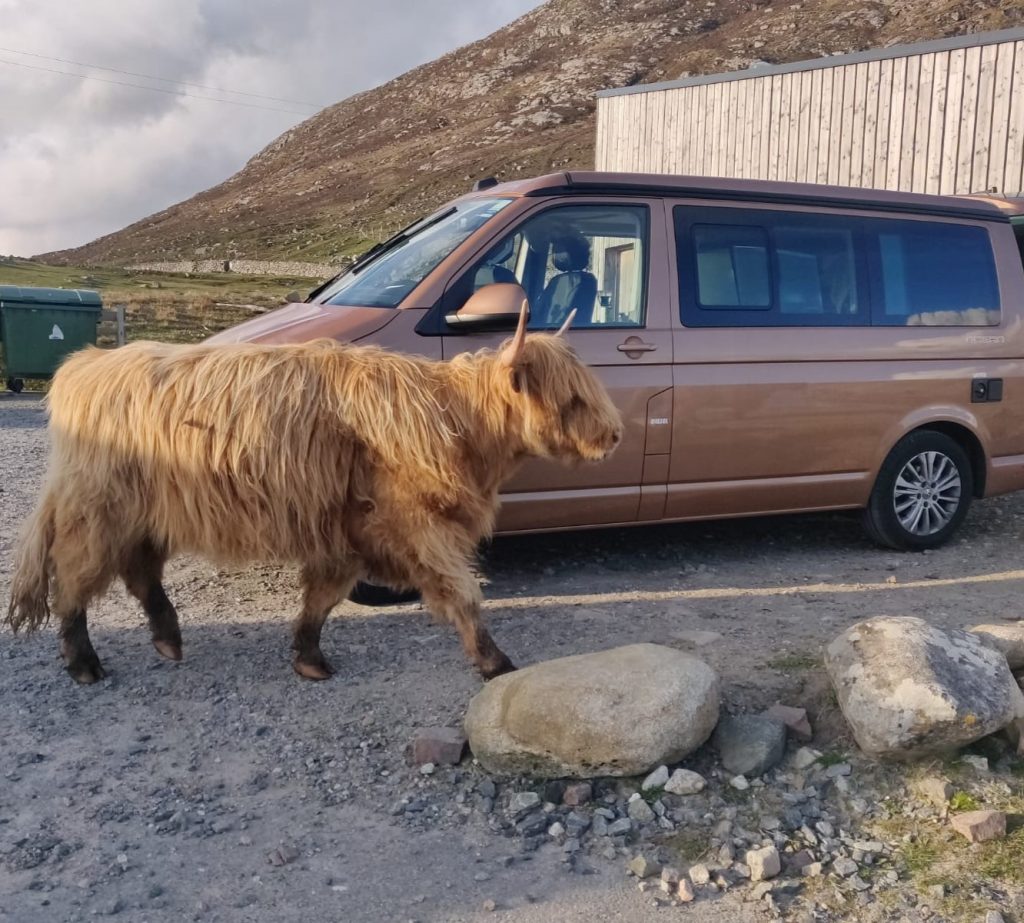
What to Pack for an Isle of Skye Road Trip?
Despite its natural beauty, the Isle of Skye is notorious for its rain and midges. Bring waterproof clothing and insect repellent any time of year but be particularly vigilant in the summer. Citronella candles are another good option as the scented smoke will keep insects out of your campervan and away from your seating area. Skye has an exposed, wind-blown landscape and visitors should pack hats and warm layers on their adventure.
Before you set off on your Isle of Skye road trip, ensure you are fully prepared for your adventure. Fill up the motorhome water tank, check your gas bottles and make sure you have topped up on groceries for meals and snacks on the road. If you have a leisure battery, double-check that it’s charged, so you can have access to electricity to power your products.
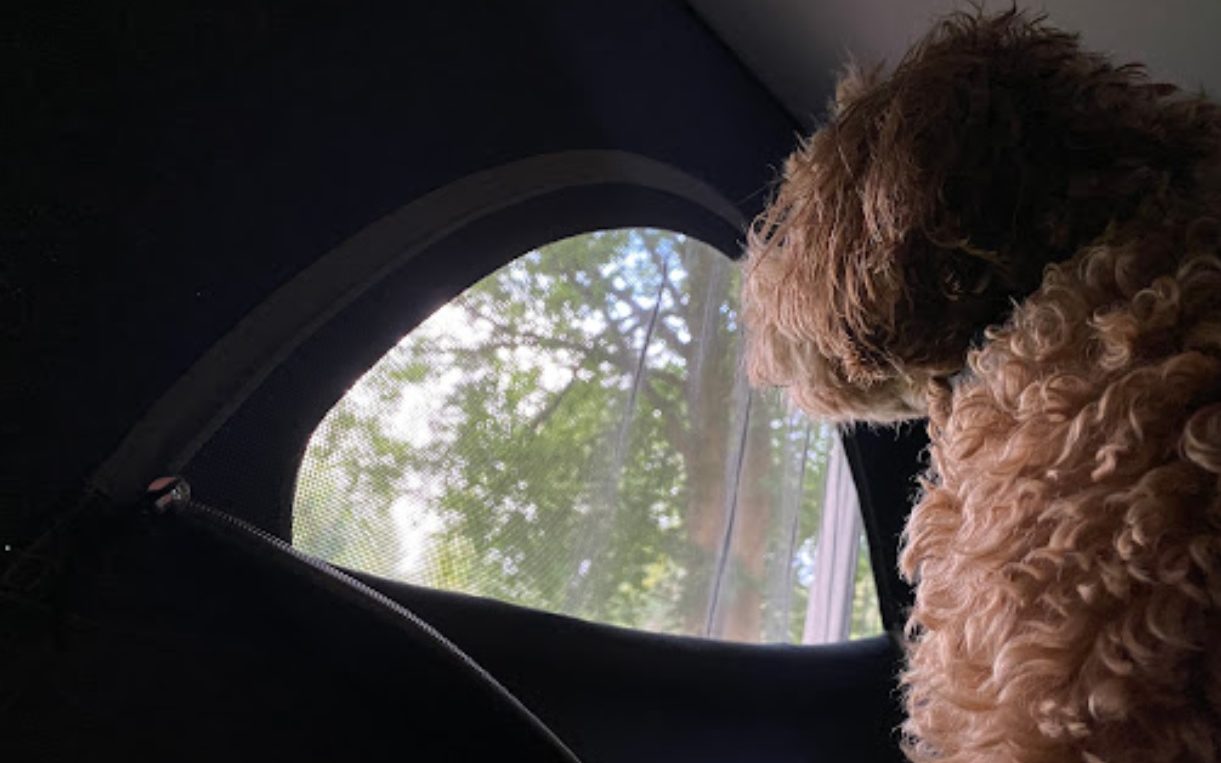
Top Sites
Skye is replete with natural wonders. The Old Man of Storr is one of the main jewels in the crown. If you like hiking or landscape photography, this is the place to go. (The Sligachan Old Bridge is another top photo spot). This area, known as the Trotternish Peninsula, is also home to the towering cliffs at Kilt Rock and the 60-metre high Mealt waterfall. Here you’ll find layers of fossil-filled sedimentary rock topped by towering basaltic lava columns.
On your Isle of Skye road trip, make sure to stop for a wild swim in the pristine Fairy Pools. These can be reached by a short hike into the Black Cuillin mountains, but beware, the water is cold! Speaking of fairies, you can also visit the Fairy Glen, a mysterious whorl of stones set in an enchanting hillside. Another top site on Skye is the Quiraing, home to some epic topography. The best way to experience this landslip is take a stroll amongst the rocks, lakes, and hills and time you visit either with sunrise or sunset.
To get your history fix, check out Dunvegan Castle, Armadale Castle, or Neist Point Lighthouse. Of course, any Isle of Skye road trip should also include a stop at Portree. Chocolate box houses and the soft sea air permeate this port town. Take a stroll along the harbour front, stop off at a café, and breathe in the wonderous Scottish coastal scene.
Skye also has a thriving ecosystem. Travellers can expect to see the white-tailed sea eagle (Britain’s largest bird of prey), seals, otters, dolphins, and plenty of other animals. Keep an eye out for birds on the sea cliffs and scan the coastal waters for signs of marine life when out and about.
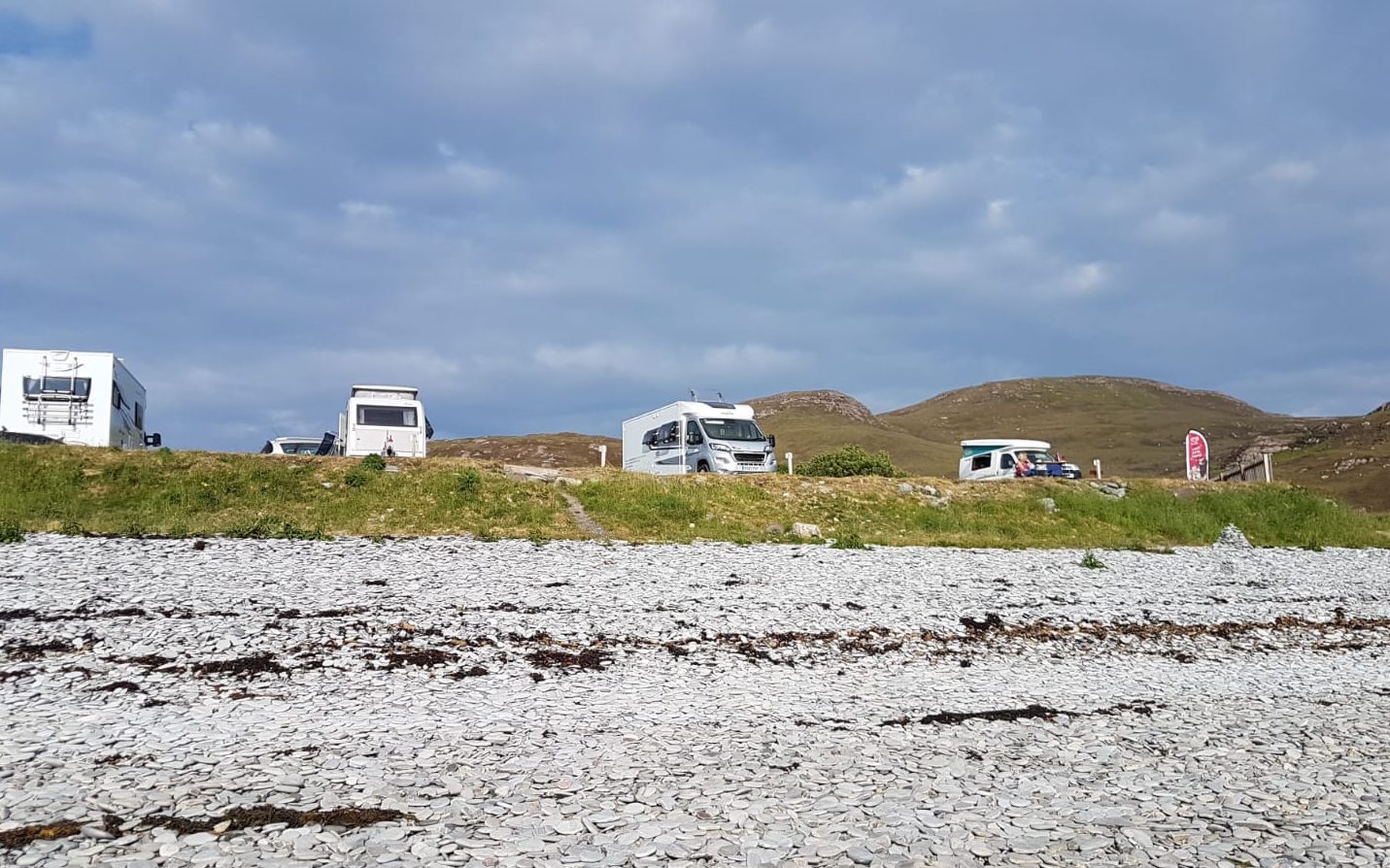
Food & Drink
When you visit the Isle of Skye, you must try some of the excellent Scottish seafood. Mussels, mackerel, sea bass, and shellfish all dominate the menus in Skye. These dishes are often accompanied by hearty broths and locally sourced vegetables such as potatoes, kale, nettles, seaweed, and sorrel. Wherever possible, try to eat local!
For restaurant recommendations, check out the mussels or fish & chips at the Claymore Bar & Restaurant. If you prefer a family-run joint, head to the Old School Restaurant in Dunvegan. In the mood for a hearty brunch? There are few better breakfast spots than Café Arriba in Portree. If you fancy splurging on a fine dining experience, head to The Three Chimneys.
As with many places in Great Britain, stone-walled pubs are a key part of the drinking scene. Step away from the bracing salt wind and enjoy a pint of bitter at The Isles Inn, The Old Inn, or Edinbane Inn. If whisky is your drink of choice, visit the Talisker Distillery in Carbost or the Torabhaig Distillery in the south for a tasting tour.

Bonus Tips
In the summer high season, the roads around the Isle of Skye can get surprisingly busy. Drive slowly (maximum speed is 60 mph) and take in the views. Try to use designated parking spaces and avoid stopping on verges. This helps to keep the island pristine for all travellers. On that note, be sure to adopt a “leave no trace” philosophy when you are van camping. This means leaving the area as you found it and cleaning up after yourself.
When you’re on your Isle of Skye road trip, you might go through cell-signal black spots. To avoid getting lost, download some maps for offline use on apps such as Maps.me. Additionally, if you do choose to go in high season, book campsites and restaurants in advance to ensure you don’t miss out. Ready to book your trip? Check out our range of motorhomes and campervans available to hire. If you need to contact us for any advice, one of our friendly team will be happy to assist!


